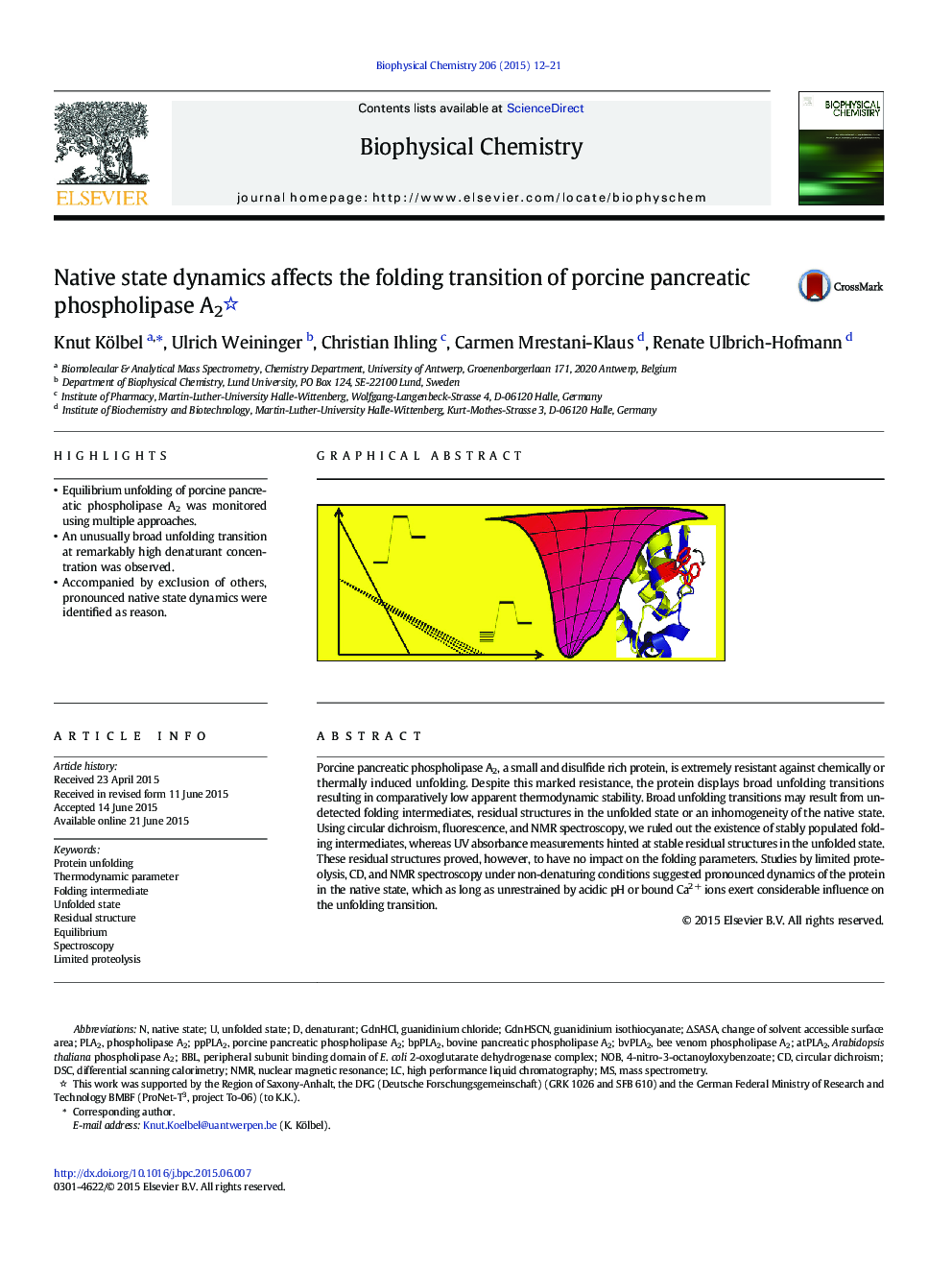| Article ID | Journal | Published Year | Pages | File Type |
|---|---|---|---|---|
| 5370777 | Biophysical Chemistry | 2015 | 10 Pages |
â¢Equilibrium unfolding of porcine pancreatic phospholipase A2 was monitored using multiple approaches.â¢An unusually broad unfolding transition at remarkably high denaturant concentration was observed.â¢Accompanied by exclusion of others, pronounced native state dynamics were identified as reason.
Porcine pancreatic phospholipase A2, a small and disulfide rich protein, is extremely resistant against chemically or thermally induced unfolding. Despite this marked resistance, the protein displays broad unfolding transitions resulting in comparatively low apparent thermodynamic stability. Broad unfolding transitions may result from undetected folding intermediates, residual structures in the unfolded state or an inhomogeneity of the native state. Using circular dichroism, fluorescence, and NMR spectroscopy, we ruled out the existence of stably populated folding intermediates, whereas UV absorbance measurements hinted at stable residual structures in the unfolded state. These residual structures proved, however, to have no impact on the folding parameters. Studies by limited proteolysis, CD, and NMR spectroscopy under non-denaturing conditions suggested pronounced dynamics of the protein in the native state, which as long as unrestrained by acidic pH or bound Ca2Â + ions exert considerable influence on the unfolding transition.
Graphical abstractDownload full-size image
